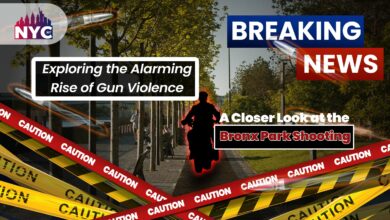Taxis at NYC Subway Make You Feel Like a VIP

Andy Byford, the new president and CEO of the NYC Transit Authority, will take up the city’s subway system in January. He’s described his new job as “probably the toughest job in transit right now,” and he’s not wrong.
Every month, there are around 75,000 subway delays, a 237 percent increase since 2012. Commuters’ average number of lost work hours has increased by 45 percent over that time. According to the Independent Budget Office of New York City, subway delays cost riders $307 million in lost work time each year.
So, what should Byford do to fix the situation? Repairing a behemoth founded in 1904 with the most stations in the world and the oldest trains still in service (the C trains from 1964 continue to run) will be difficult. However, The Post received ideas from four consultants, thinkers, and innovators.
Fewer people on the platforms
Gabriel Sanchez is an MIT lecturer and research associate specializing in public transit, systems, data, and operations. We’ve all been on rush-hour platforms, squeezing onto a recently arrived train while fellow commuters fight for admission and prevent doors from closing. This creates significant delays.
Sanchez believes that platforms should be kept from being overcrowded in the first place. “They meter the flow of passengers in London,” Sanchez explained. “Once the crucial threshold of persons on the platform is reached, access to the platform is temporarily restricted by keeping passengers on the opposite side of the turnstile.” You close the turnstile and declare that it is temporarily closed.”
How they you feel like a VIP?
An attendant, either on the platform or in a central position, monitors the situation using a closed-circuit camera and determines when to reopen the turnstiles and make the announcement to resume movement.
Sanchez claims that this method not only makes platforms and subway carriages more comfortable, but it also reduces train delays.
By avoiding overloading the train, Sanchez claims that “you can save one-fourth of the time that the train usually spends in the station.” “It ensures uniformity between when the train departs and when the next one arrives.” It keeps trains from becoming clogged.”
Levitating Trains
Kevin C. Coates, transportation and energy policy consultant who previously worked with Transrapid, the Chinese government’s supplier of magnetic train carriages.
Trains flying above their tracks on magnetic waves may sound like something out of “Blade Runner 2049,” but Coates insists the concept is not that far-fetched. In fact, maglev trains (which stand for magnetic levitation) are already in use in England, South Korea, and China (where these trains have been operating continuously since 2004).
Solve problems
Coates believes they would be able to solve problems in New York.”You don’t need drivers to run the trains; simply operators in a central control room.” “They’d all be automatic and always on schedule to the second,” Coates explained. “When I inquired about maintenance with one of my Chinese connections, he scoffed at me. Over the course of 14 years, there was a two-week period when the rails needed to be adjusted, but the trains continued to run. While the trains are still moving, maintenance can be performed on the track. When vehicles are serviced, the only parts that need to be replaced are circuit boards and batteries.”
How they you feel like a VIP?
Magnetic trains are smoother and quieter than our current subways, according to Coates. However, don’t expect to travel between Shanghai and Beijing at 370 miles per hour. Because of the multiple stops required, Coates believes that 60 mph is a more reasonable speed, akin to a nine-station train now operating in Nagoya, Japan. MTA trains can currently travel at a top speed of 50 miles per hour. However, that speed is rarely attained. MTA speeds average 17.4 miles per hour, according to a national research conducted by Matt Johnson, project manager for Montgomery County Department of Transportation near Washington, DC.
Magnetic trains
How do magnetic trains function? “The train moves because of a magnetic wave carried by electrical lines beneath the track,” Coates explained. “The car rides the wave. Recognizing that it will not be cheap for the MTA — a maglev project being considered to connect Washington, DC, and Baltimore, which would cover only 35 miles, is estimated to cost $15 billion — Coates said decision-makers should look beyond the immediate outlay, which would require new trains, tracks, and a computerized control system.
He estimates that upgrading to maglev may take “a decade or two,” depending on how intrusive politics become, but argues that it will be worth it in the long term. “You won’t have to touch it for a hundred years.” [Maglev] is a twenty-first-century technology.”
Computers replace obsolete signals
Richard Barone, vice president of transportation of the Regional Plan Association, a New York City-based urban-policy group
When your train becomes stalled to the point where commuters abandon it and begin hailing Ubers, the cause is frequent signal failure — one of the most common causes of mechanical delays. Signals are the crucial lights that turn red, yellow, or green to manage train traffic movement. When a signal fails, sometimes owing to technical problems, trains are immediately halted and unable to move to avoid crashes.
However, much of this system is quite old. “There are a lot of ancient components from the 1930s, and [Hurricane] Sandy didn’t help,” said Barone. “Salt water got into the copper wiring, which has been repaired [but not necessarily replaced], resulting in more frequent failures.”
How they you feel like a VIP?
Trains today cannot communicate their locations and must remain hundreds of feet apart for safety reasons. This results in choppy service.
Barone rejects critics who argue that the NYC subway is too old for such an improvement. He cites the Paris Metro, which opened in 1900 and began retrofitting with modern technologies in 2007. “Paris has a system that is as old as ours, and its oldest line is driverless today.” Barone suggests that the MTA switch from “analogue to digital” by removing obsolete signals and replacing them with contemporary computer-controlled train controllers. According to Barone, it is “a new form of technology where the train and tracks talk to each other.” “There is a transponder that is programmed with its location every hundred feet [on the track].” A central computer tracks all the trains’ whereabouts in the subway system using radio signals, allowing them to run closer to each other safely and arrive at stops that are more uniformly spaced, resulting in fewer standstills.
Charge extra for tickets to riders and companies — and take it!
From 1986 to 1989, Robert Paaswell, a renowned professor of engineering at City College, led the Chicago Transit Authority.
Paaswell thinks that the subway system has to be updated and modernized; failing to do so, he says, may lead to the city’s decision-makers deciding that “maybe they’d rather go to Portland, Oregon, God forbid” and he actually has a plan for doing so.
How they you feel like a VIP?
“When the MTA calculates an operational budget, which is negotiated each year with the state of New York, it is the basic minimum for providing service every day,” he explained. “However, it is insufficient to suit the needs; otherwise, the Subway stations would be clean, the trains would run smoothly, and the air conditioning would always function.” Because of the high demand and the limited funding, the system does not receive all of the necessary maintenance.”
To make up for the financial imbalance, Paaswell advises looking to the people who gain the most from our transportation system. “Business owners, developers, individual apartment owners, and landlords should all put money into it,” he says.
He anticipates additional infusions from rising subway fares: “They are low in New York. For a single fare drop, several European towns charge the full operating cost of the route.” Single fares in London, for example, range from $6.50 to $7.80 (fares purchased via Oyster, a smart card that holds pay-as-you-go credit, are less expensive); in Berlin, traveling underground can cost up to $4. He proposed that New York charge more than the standard $2.75 fare, and that the city reimburse the MTA for free rides provided to students, seniors, and low-income job seekers..Finally, Paaswell suggested learning from London, where subways, buses, ferries, railroads, city highways, and streets are all managed by the same company: Transport For London. (In New York, the streets, city highways, and public transportation all operate independently.)
Congestion charge on drivers
When the city of London imposed a congestion charge (approximately $15.42) on drivers entering or parking in the city during peak hours, it resulted in a more efficient system overall, according to Paaswell. “Because there were fewer cars in London’s center, buses ran more efficiently.” They moved so quickly that they had to be rescheduled.“Paaswell’s final piece of advice is that impatient New Yorkers should be more forgiving, forward-thinking, and adaptable as the system improves. Paaswell claims that if the city shuts down lines to improve them, the job can be done in two to three years.
“In London, they shut down lines about 2007, people complained for two years, refurbishments were performed, and the city didn’t fall,” Paaswell explained. “People adjust, and the payoff is worth it in the end.” “There is no gain without pain.”



